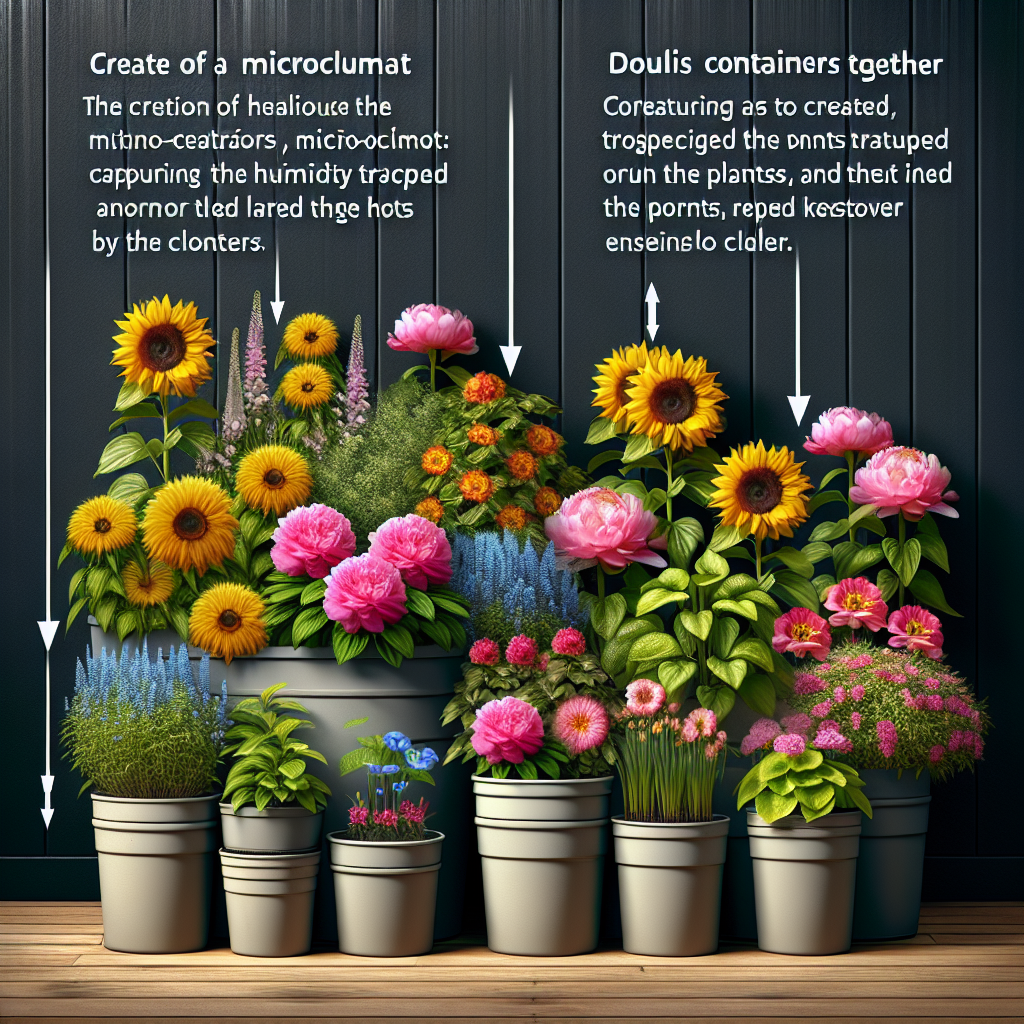Table of Contents
Grouping containers in a garden can have a multitude of benefits that go beyond simply organizing your plants. By strategically grouping containers together, you can create microclimates that are conducive to the growth of specific plants. Additionally, grouping containers can enhance the visual impact of your garden, making it more aesthetically pleasing and inviting. In this article, we will explore the benefits of grouping containers in your garden, focusing on how it can improve the microclimate for your plants and elevate the overall visual appeal of your outdoor space.
Whether you are an experienced gardener looking to take your container gardening to the next level or a beginner looking to create a beautiful outdoor oasis, understanding the advantages of grouping containers is essential. From creating optimal growing conditions for your plants to designing visually stunning arrangements, grouping containers can be a game-changer for any garden enthusiast. Read on to discover how you can harness the power of grouping containers to transform your garden into a thriving and visually captivating space.
The Benefits of Grouping Containers
Grouping containers in your garden offers numerous benefits that can enhance the health and beauty of your plants. One key advantage of grouping containers is the ability to create microclimates within your garden. Microclimates refer to small areas within a larger space that have distinct environmental conditions, such as temperature, humidity, and light levels.
Microclimate
When you group containers together, you can manipulate these environmental factors to create ideal growing conditions for specific plants. For example, placing heat-loving plants like tomatoes and peppers in a sunny spot with good air circulation can help them thrive, while providing shade-loving plants like ferns and hostas with protection from direct sunlight can prevent them from wilting.
By strategically arranging your containers based on their sun exposure and water requirements, you can optimize their growth and productivity. Grouping containers also allows you to control soil moisture levels more effectively by creating zones with similar watering needs. This way, you can prevent overwatering or underwatering certain plants, leading to healthier root systems and overall plant vitality.
Visual Impact
In addition to improving the microclimate for your plants, grouping containers can enhance the visual impact of your garden. By combining different shapes, sizes, and colors of containers together, you can create striking compositions that add interest and dynamic contrast to your outdoor space. Mixing tall planters with trailing vines or pairing bold foliage with delicate flowers can create visually stunning displays that draw attention and evoke a sense of harmony.
Grouping containers also allows you to experiment with different heights and textures, adding dimensionality and depth to your garden design. You can create focal points by clustering large planters around a central feature or frame an entrance with symmetrical arrangements on either side. The possibilities are endless when it comes to using grouped containers as design elements in your garden.
Conclusion
Grouping containers in your garden offers a range of benefits that cater to both the practical needs of your plants and the aesthetic preferences of your outdoor space. By creating microclimates tailored to specific plant requirements and designing visually appealing arrangements that capture attention, grouping containers allows you to maximize the potential of your container garden.
Frequently Asked Questions (FAQ)
- How do I determine which plants should be grouped together?
When grouping containers in your garden, consider each plant’s sun exposure requirements, water needs, and growth habits. Group together plants that have similar environmental preferences so they thrive together. - Can I mix different types of planters when grouping containers?
Yes! Mixing different types of planters adds visual interest and diversity to your garden design. Experiment with various shapes, sizes, colors, and materials for dynamic compositions. - Do grouped container gardens require special maintenance?
Grouped container gardens may require more frequent watering due to increased competition for nutrients among closely planted pots. Monitor soil moisture levels regularly and adjust watering schedules as needed. - How can I use grouped container gardens to enhance my outdoor living area?
Arrange grouped container gardens strategically around seating areas or walkways to create inviting spaces that showcase nature’s beauty up close. Use colorful blooms or fragrant herbs for added sensory appeal. - Are there any potential drawbacks to grouping containers?
While there are many benefits to grouping containers in a garden, one potential drawback is limited flexibility in rearranging individual pots without disrupting established groupings. Plan ahead when setting up grouped container gardens for easy access and maintenance.













